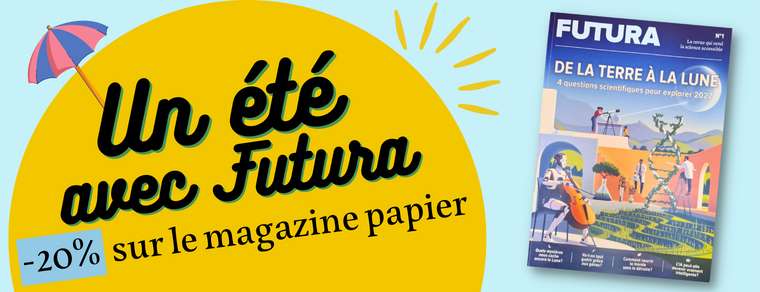For more than fifty years, there has been an increase in tick populations in Europe, which is accompanied by a greater spread diseases they carry.
Climate change, human activities, changes in ecosystems… Several factors have been put forward to explain the reasons for this situation. More specifically, what are the causes and what is the role of human beings in this phenomenon?
Mainly forest ticks
In Europe, the ticks most affected by this population increase are Ixodes ricinus and, to a lesser degree, the tick Dermacentor reticulatus.
Ixodes ricinus is the most abundant tick in thenorthern hemisphere. It feeds exclusively on blood on a wide variety of hosts: small and large mammalsbirds and even reptiles… More than 300 species animals are susceptible to being bitten! The human being, on the other hand, is an accidental guest. After hatching, the development of this tick follows several stages (called “stasis”): larva, nymph, then adult. Small nymphs are particularly involved in the transmission of bacteria (such as that responsible for Lyme disease), viruses, even parasites in humans.
Ixodes ricinus needs a strong hygrometry and a temperature of at least 5°C to be active. It grows in vegetation, mainly in forests (even if his presence in town is increasingly reportedoften in spaces heavily vegetated). She lives in thehumus and the litters of leaves, spending its time climbing on the grass to hunt on the lookout and then descending to the ground to rehydrate. In winterit goes into diapause, ceasing all activity.
Since this tick lives mainly in the woods, all practices that lead to an increase in forest cover favor its proliferation. However, these have changed somewhat in recent years.
Evolution of logging practices
Formerly, after a cut of wood, all the parts of the trees were exploited: the logs were used to make furniture, the crown provided firewood or matter for the production of chips or pulp. On the other hand, at present, a large quantity of wood is left on the ground. Rodents and birds can take shelter and nest there, while ticks find suitable protection (and food…). Ecologically questionable, ecobuage (clearing by burning) and clearcutting, which made the environment unsuitable for ticks, have been largely abandoned.
The presence of bark beetles on certain tree species has led to the use ofinsecticides by dusting affected trees in the 1950s (and more recently by spraying with pyrethrins), which probably also indirectly impacted ticks in the forest environment.
Moreover, in our country, the proliferation of ticks has been favored by the modification of landscapes: the forest now occupies 31% of the territory (67% of stands are hardwood). However, the development of road infrastructure,agriculture intensive (new dimensions of agricultural holdings) and urbanization have led to a fragmentation of the landscape. In some regions, the forest massifs are now isolated plots, in which proliferates a wildlife favorable to tick populations (and pathogens partners), such as rodents and deer.
Role of wildlife
Ticks are strictly hematophagous: they feed only on blood. Much blood: ticks females need 100 times their weight in blood! To obtain it, they must have a variety of fauna available. Their preferred hosts are deer, especially deerand suids like the Boar.
However, over the past 40 years, the populations of these two species overall increased by a factor of 10, although there are regional disparities. Result: deer and wild boar are increasingly found in urban and suburban areas, where they feed in gardens.
If the hunting of deer and suids could contribute to the regulation of their populations, certain practices such as agrainage (artificial feeding of game) favor on the contrary their proliferation. Indeed, if deterrent feeding aims to keep suids in the heart of forests, feeding sites attract not only wild boars, but also a whole fauna carrying ticks: rodents, birds and their predators, badgers, even roe deer and stags.
By concentrating more animals on a restricted surface, fixed feeders create spaces that favor not only the development of ticks, but also that of other diseases carried by wildlife.
The role of socioeconomic changes
A number of socio-economic transformations may have increased tick populations in France. In many regions, the desertification rural areas and the abandonment of plots dedicated to agriculture have favored the planting of trees (or afforestation), most often spruces. Wastelands have also developed, habitats of choice for small and large mammals, which are the preferred hosts of ticks. Ixodes.
Added to this is the fact that some human practices that altered the environment of ticks and likely kept their populations low have also disappeared. Today we consume less game, we no longer collect residual crown wood after logging, dead leaves are no longer used for garden manure…
Climate change
The impact of climate change is often mentioned, especially in the possible decrease in tick populations Ixodes ricinus. This tick needs high ambient humidity (at least 80% humidity). If the frequency and intensity of heat waves increase, ticks could disappear from certain regions. However, this impact on the populations ofIxodes spp. is currently limited.
Conversely, the climatic changes could also create favorable conditions for the colonization of other places by ticks, particularly at altitude if changes in vegetation occur. They could also become active all year round in case of season less marked winter.
Many of these phenomena are well documented in the United States. If the European context is not quite identical, we can expect the same observations on our continent.
Take coordinated actions
Given their wide distribution in the environment, it is illusory to hope to eradicate ticks. The reasons for the increase in their populations being multifactorial, reducing their size and controlling their spread requires coordinated actions involving many actors: foresters, hunters, farmers, competent authorities, etc.
At the same time, we must also reflect on the definition of a biodiversity favorable to the cohabitation of human beings and ticks. In a few years, we have gone from one extreme to the other in terms of “environment to tick”. We must now ask ourselves how to properly vegetate our environment without making it conducive to the proliferation of these ectoparasites.

Installing barriers around your garden helps keep wildlife away, and therefore the ticks it may carry. © Randy Fath, Unsplash
A few simple steps can already be applied by everyone to achieve this: installation of barriers to prevent suids and deer from approaching dwellings, mowing grass around them (ticks do not like drought), elimination of damp areas, deworming of pets…
The fight against ticks is increasingly covered in the media, but is still struggling to become part of a real public health problem in France. Until the situation improves, it will therefore be necessary to continue to carry out a meticulous physical examination after each walk in “tick zones”…
Reading ideas for the summer with Futura?
To celebrate the start of the holidays, we offer you the Mag Futura at the preferential price of 15 € instead of 19 €, i.e. a reduction of 20% !
What is Mag Futura?
- Our first paper journal of more than 200 pages to make science accessible to as many people as possible
- 4 major scientific questions for 2022, from the Earth to the Moon
- Home delivery*
*Special offer valid until July 19. Delivery is made in France (excluding metropolitan France), Switzerland, Belgium.
Interested in what you just read?

